Venice Beach in California was built over a century ago as a dreamy replica of Venice, Italy, complete with canals and elegant architecture.
Today, the neighborhood shows its age with fading structures and weathered boardwalks, but that worn character only adds to its charm.
Travelers from around the world still flock here for the colorful street performers, quirky shops, and endless people-watching opportunities that make Venice Beach unlike anywhere else.
1. A Dream Born in the Marshes
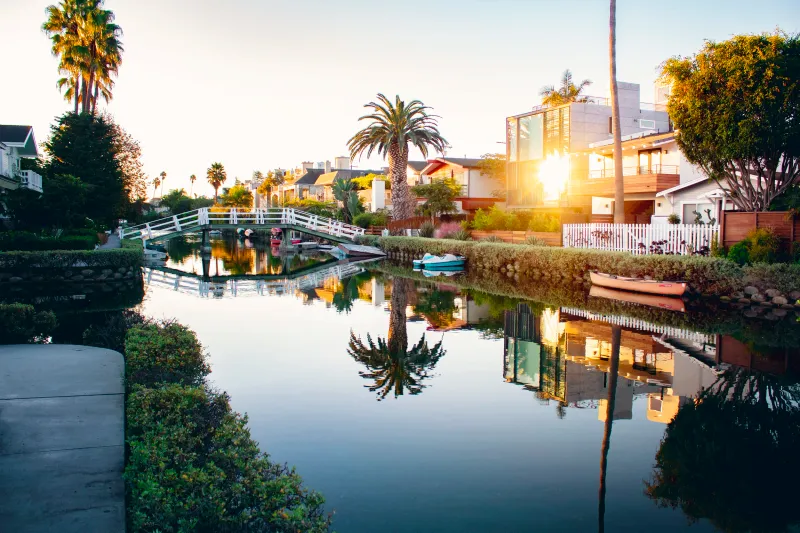
In the early 1900s, tobacco tycoon Abbot Kinney had a vision to bring Venice, Italy to the California coast. He transformed 1,200 acres of marshland into a canal-laced paradise filled with gondolas and ornate architecture. Kinney’s “Venice of America” opened in 1905 to thousands of curious visitors.
The canals shimmered under the sun, and Italian gondoliers sang as they rowed guests through the waterways. It was a spectacle of culture and ambition, unlike anything else in Southern California. Kinney wanted more than a beach town – he wanted a place where art and elegance thrived.
For a time, his dream flourished with grand buildings, a saltwater pool, and a ship-shaped restaurant. The canals were the centerpiece, winding through neighborhoods and shaping small islands. Visitors came for the novelty and stayed for the charm.
Kinney’s Venice was a bold experiment, and it worked – at least for a while.
2. Canals That Once Carried Songs

The original canal system featured seven named waterways, each carved by hand from sand and soil. Gondolas glided through Aldebaran, Altair, Cabrillo, Coral, Grand, Lion, and Venus canals. Italian boatmen wore striped shirts and straw hats, singing in their native tongue as they rowed.
The bridges arched gracefully over the water, connecting footpaths and homes. It felt like stepping into Europe without leaving California. The canals were filled with salt water from the Pacific, refreshed twice daily through a clever pipe system.
Families strolled along the banks, and children waved at gondoliers from the bridges. The water sparkled, and the buildings around it echoed Venetian style. Kinney’s dream was alive in every detail, from the architecture to the atmosphere.
It was a place of romance, culture, and community. But as the years passed, the tides of change began to wash over this idyllic scene.
3. When Cars Replaced Gondolas
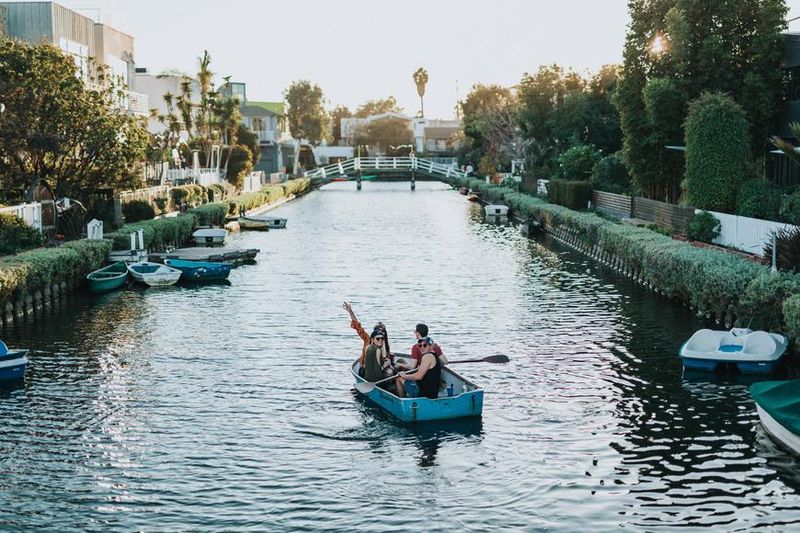
By the 1920s, the automobile was king, and Venice’s canals were no longer practical. Los Angeles annexed the area in 1925, and city planners began paving over the waterways. The canals that once carried gondolas were filled in to make roads for cars.
Grand buildings were demolished or remodeled beyond recognition. Only a small portion of the original canal network survived. The rest became just another grid of streets in a growing city. Kinney’s vision faded beneath the weight of urban development.
The romance of the canals gave way to the roar of engines and the hum of traffic. Residents watched as their unique neighborhood transformed into something more ordinary. The bridges remained, but the water beneath them disappeared.
It was a quiet unraveling of a once-grand experiment.
4. A Hidden Gem in Plain Sight
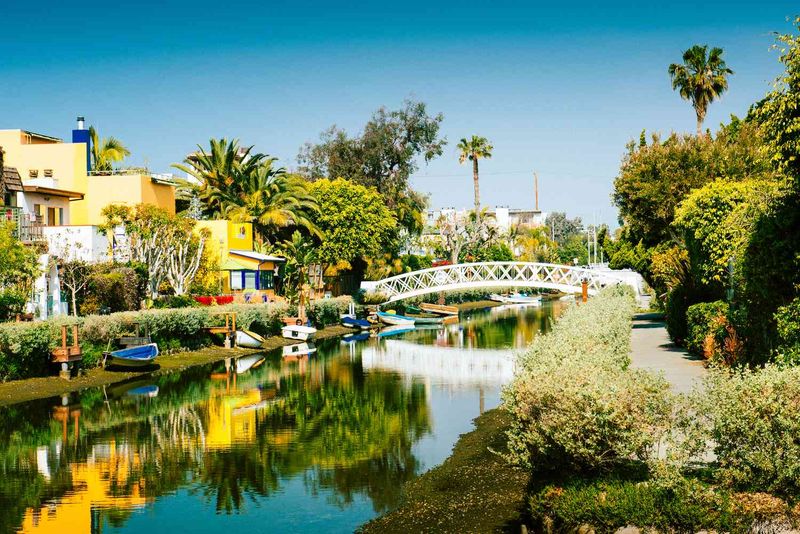
Today, the remaining canals form the Venice Canal Historic District. Tucked between Pacific Avenue and Venice Boulevard, this area feels like a secret escape. Wooden footbridges still arch over the water, and ducks paddle lazily between lily pads.
Locals walk their dogs along the scenic paths, and visitors snap photos of eclectic homes. The canals are peaceful, far removed from the chaos of the nearby boardwalk. It’s a neighborhood that whispers history with every ripple.
Though smaller than Kinney’s original vision, the surviving canals retain their charm. They offer a glimpse into what once was, preserved in quiet corners. The homes lining the banks are colorful and creative, each with its own personality.
Some even have small docks, a nod to the past. Walking here feels like discovering a forgotten chapter of California’s story.
5. Cracks in the Charm
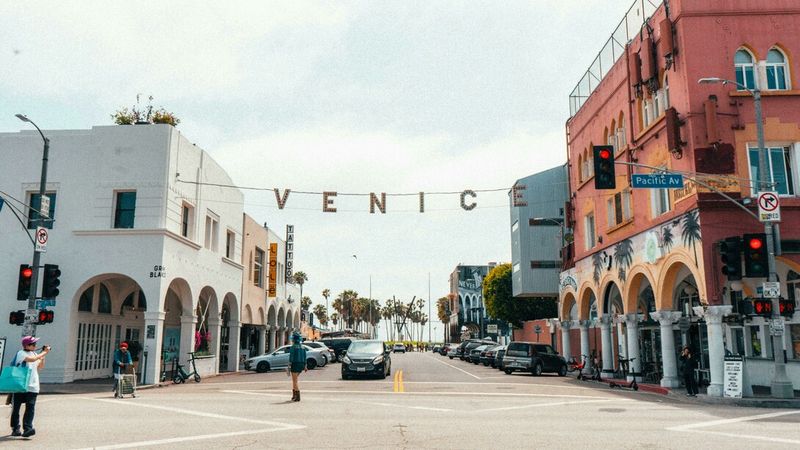
Despite its beauty, Venice Beach shows its age. The boardwalk is weathered, with cracked concrete and faded paint. Muscle Beach’s outdoor gym has rusted equipment and peeling signage. The skate park, though lively, bears the marks of years of use.
Buildings lean slightly, and murals fade under the sun. The charm is still there, but it’s worn and frayed. Locals embrace this imperfect character, seeing it as part of Venice’s identity.
Tourists often find it endearing, a sign of authenticity. But the decay is real, and it raises questions about preservation. Kinney’s tribute to Venice wasn’t built to last forever.
Still, the spirit of creativity and rebellion keeps the area alive.
6. Art That Refuses to Fade
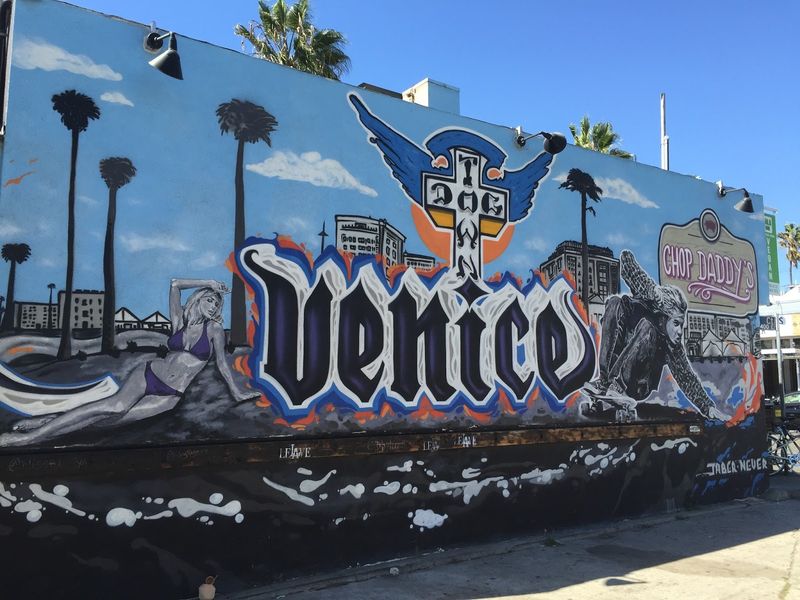
Venice Beach is a canvas for street artists and muralists. Massive paintings cover walls, transforming buildings into open-air galleries. The graffiti park near the boardwalk changes daily, with new layers replacing old ones.
It’s a living, breathing art scene. Some murals carry political messages, while others explode with color and imagination. Artists come from around the world to leave their mark. Legal walls coexist with unauthorized tags, creating a blend of order and chaos.
The result is a neighborhood that pulses with visual energy. Even as buildings crumble, the art keeps Venice vibrant. It’s a form of resistance against time and conformity.
Visitors wander with cameras, capturing moments before they vanish under fresh paint.
7. The Boardwalk’s Wild Heart
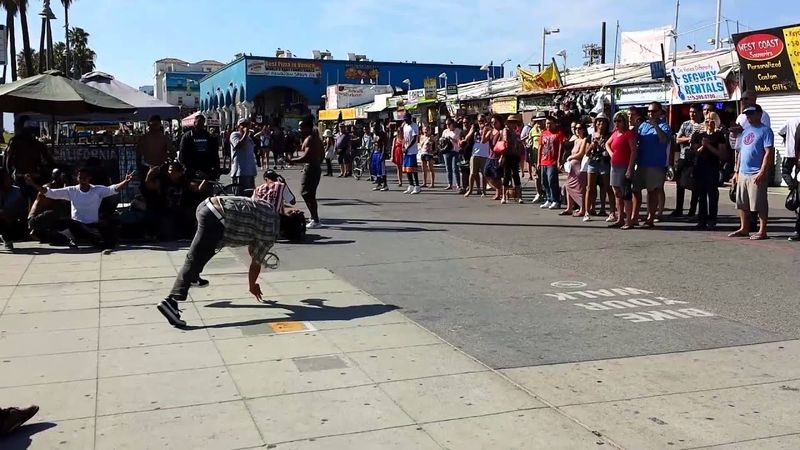
Ocean Front Walk is the beating heart of Venice Beach. From sunrise to sunset, it buzzes with performers, vendors, and curious travelers. Street musicians play everything from jazz to experimental beats. Acrobats flip through the air, and fortune tellers offer readings from tiny booths.
The air smells like sunscreen, incense, and fresh pretzels. Shops sell handmade jewelry, crystals, and quirky souvenirs. The boardwalk is cracked and patched, but it feels alive.
People from every background imaginable gather here. It’s unpredictable, colorful, and endlessly entertaining. Even frequent visitors find something new each time.
This is where Venice’s spirit shines brightest, despite the wear and tear.
8. Muscle Beach Still Flexes

Muscle Beach has been a fitness icon since 1934. Bodybuilders train under the sun, lifting weights and posing for onlookers. Arnold Schwarzenegger once worked out here, adding to its legendary status. The gym is open-air, surrounded by chain-link fencing.
Rings, bars, and platforms fill the space, all exposed to salty air. The equipment shows signs of age, but the energy remains strong. Casual fitness fans mix with serious athletes, creating a diverse scene.
Seagulls circle overhead as reps are counted. It’s a place of dedication and spectacle. Watching someone bench press with the ocean behind them is uniquely Venice.
Even as the paint fades, the culture endures.
9. Skaters Keep the Edge
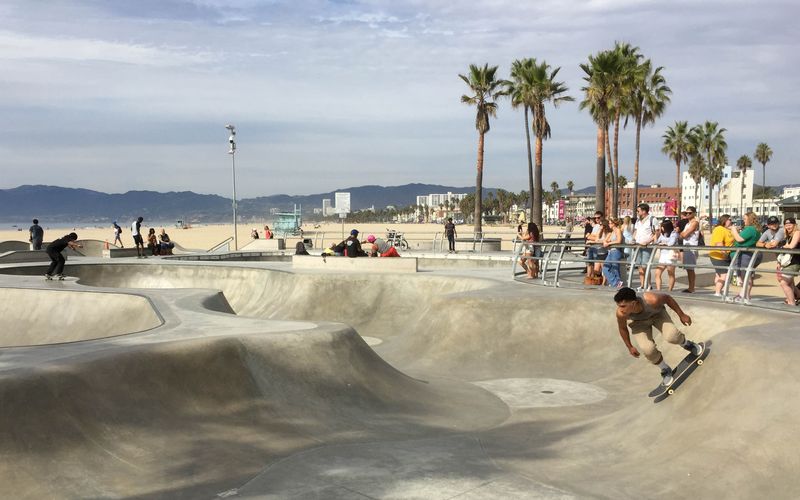
The Venice Beach Skate Park opened in 2009, honoring decades of skateboarding history. Before it existed, skaters rode empty pools and sidewalks. Today, the park features deep bowls, street elements, and smooth transitions.
Riders of all skill levels carve through the concrete. Spectators gather to watch tricks and wipeouts. The sound of wheels and boards creates a rhythmic backdrop. The park sits right on the sand, blending beach vibes with urban grit.
It’s a magnet for fearless youth and seasoned pros. Though the surface shows wear, the spirit is fresh. Venice skating is aggressive, creative, and unapologetic.
This park keeps that legacy alive, one kickflip at a time.
10. A Tribute That Still Inspires

Venice Beach may be crumbling in places, but its magic endures. Kinney’s canals, though fewer, still whisper of a grand dream. The boardwalk, with all its quirks, remains a cultural crossroads. Art, fitness, music, and rebellion thrive in this coastal enclave.
It’s not polished, and that’s part of the appeal. Venice invites you to embrace imperfection and celebrate creativity. Whether you’re strolling the canals or watching a chainsaw juggler, the experience is unforgettable.
This tribute to Venice, Italy may have faded, but it hasn’t disappeared. It lives on in every mural, bridge, and beat. Curious travelers still flock here, drawn by the promise of something different.
Dear Reader: This page may contain affiliate links which may earn a commission if you click through and make a purchase. Our independent journalism is not influenced by any advertiser or commercial initiative unless it is clearly marked as sponsored content. As travel products change, please be sure to reconfirm all details and stay up to date with current events to ensure a safe and successful trip.